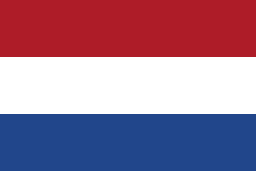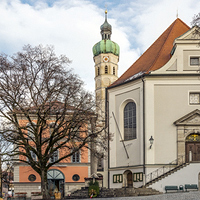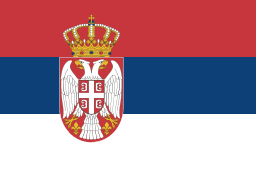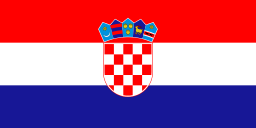The „Museum of Phantasy“ is the legacy of artist and collector Lothar Günther Buchheim, whose personal and unique mixture of expressionist art is on show here. A memorial of 20th century art, ideally presented at the banks of Lake Starnberg in the extravagant architecture by Günter Behnisch.
Show Guides for Language:
Dachau has not only a scenic old centre with St. Jacob’s Church and the Wittelsbach Castle, it was also home to an artists‘ colony. Carl Spitzweg painted here as well as Max Liebermann and Lovis Corinth, all inspired by the town, its rural hinterland and the seemingly endless view from the castle.
Show Guides for Language:
After 1933, the Obersalzberg above Berchtesgaden was converted to Adolf Hitler’s secondary seat of government. An elaborately and carefully designed documentary enables the visitor to learn, at the historic site, about the Nazi dictatorship and the dark history of the Obersazberg and the Kehlsteinhaus.
Show Guides for Language:
As on old Bavarian settlement and former ducal city Erding has a rich history to offer. Today it is district capital and, located between Munich and the airport, as modern as you could ask for.
Show Guides for Language:
Frauenchiemsee (Fraueninsel) in Lake Chiemsee is accessible by boat only, and no more than a few people live there permanently. The island has been dominated by the 1200-year-old nun convent which still exists. The monastery complex, including rests of Carolingian buildings, tells about the monastery’s long history and secluded life on this idyllic little island.
Show Guides for Language:
The Cathedral Hill in Freising reminds of the very beginnings of Bavaria in the early middle ages. 1250 years ago missionary bishop Bonifatius laid the foundations of the diocese of Freising and the first ecclesiastical organisation. The cathedral hill with cathedral and romanic crypta, episcopal residence and diocesan museum invite to a journey through time of Christianity and religious art in Southern Bavaria.
Weihenstephan is another of Freising’s significant sites. The former wictine monastery complex now houses a historical brewery and a museum.
Show Guides for Language:
Herrenchiemsee in Lake Chiemsee: Monks dwelled there once, before bishops ruled the land. Then King Ludwig II discovered the remote island which soon became one of his favourite places. He bought the island and planned and built Schloss Herrenchiemsee, the most magnificent of his castles, truly a second Versailles.
Show Guides for Language:
Andechs monastery, founded in 1455, is one of the most important pilgrimage sites in Old Bavaria. Visitors and pilgrims who climb up to the „Holy Mountain“ not only seek retreat for the soul in the famous pilgrimage church in Rococo style, but also refreshment for the body with the specialties of the monastery brewery.
Show Guides for Language:
1200 years ago Benedictine monks settled here in the prealpine land and left a lasting impact on the whole region. Though they have left long ago, we still get to admire the impressive monastery complex which is dominated by the Basilica and parish church St. Benedikt, a masterwork of Baroque splendour.
Show Guides for Language:
Ettal abbey, founded in 1330 by emperor Ludwig „the Bavarian“, lies quaintly within the landscape of the Graswangtal near Oberammergau. In the centre of the Baroque monastery complex is the Church, an octogon richly ornamented with stucco work of the Wessobrunn school.
Show Guides for Language:
The former Benedictine monastery Wessorbunn is more than 1200 years old. From this place the first prayer in German language, written shortly after 800, was passed down to us. Later the Wessobrunn workshops produced a large number of eminent plasterers and artists, whose works gained fame well beyond Wessobrunn.
Show Guides for Language:
The landscape around Lake Chiemsee is among the most attractive Bavaria has to offer. It was shaped not only by nuns and monks who settled here as early as the 8th century. Ludwig II’s Herrenchiemsee palace, a „second“ Versailles, was his most ambitious project which celebrates splendour and the monarchy. The Old Castle, however, is a historic site of Democracy: In 1948 the constitutional convention discussed the first draft of the German Grundgesetz there.
Show Guides for Language:
In the Berchtesgadener land, at the feet of the steep, soaring Watzmann mountain, lies the Königssee. Emerald green and bottomless, the Königssee is one of the most beautiful lakes in Bavaria. Its landmark is the pilgrimage church St. Bartolomä which can only be reached by boat. The wild, untamed nature was an inspiration not only for the writer Ludwig Ganghofer. The Wittelsbach Monarchs and the Prince Regent Luitpold were avid hunters in the region, to which the royal Jagdschlösschen in the vicinity of St. Bartolomä still bears witness.
Show Guides for Language:
Austrian Empress Sisi spent her childhood at Lake Starnberg, and it was also here that King Ludwig II mysteriously found his death. Writers and artists were inspired by the scenic beauty and the culture of the surrounding towns. Nowadays the lake not only attracts those who want to track down the rich history. It also offers ample opportunities for sports, recreation and art.
Show Guides for Language:
History is everywhere in the former residential town of the Wittelsbach dynasty. Numerous churches, monasteries, fortifications and, above all, Castle Trausnitz remind of Landshut’s heyday, when the Bavarian dukes resided here. Every four years the people of Landshut reenact the magnificent wedding celebrations that took place here in 1475, when Duke Georg der Reiche married Hedwig of Poland and tens of thousand eminent guests celebrated over days.
Show Guides for Language:
Linderhof palace is situated near Oberammergau and Ettal Abbey. It is the only of Ludwig II’s castles that was finished during his lifetime. Here he could lose himself in the music of Richard Wagner, to which he rendered homage in several buildings in the park and the famous Venus Grotto.
Show Guides for Language:
Around the year 1900 a group of artists was inspired by the special light and the colours of the prealpine lands and the nearby moor. They settled in Murnau near lake Staffelsee. Wassily Kandinsky, Gabriele Münter and the group „Der Blaue Reiter“ have since been inextricably linked to the pictoresque Bavarian town. They can be tracked down not only in their former home („Münterhaus“) but also in the Murnau Castle Museum.
Show Guides for Language:
Ludwig’s II enthusiasm for an idealised medieval chivalry and his infatuation with the work Richard Wagner’s never found a more perfect symbiosis than in Neuschwanstein. The Castle near Füssen offers a glimpse into the king’s strange world of thought, who within this splendid backdrop of Historism could completely withdraw from the world.
Show Guides for Language:
Amid the Ammergau Alps, whose beauty also enchanted König Ludwig II, lies Oberammergau. An idyllic example of Old Bavaria, with houses ornamented with Lüftlmalerei (fresco paintings), with a great tradition in wood carving and with an oath, first taken in 1633, to reenact the passion of Christ every ten years, as was done last in 2010.
Show Guides for Language:
Easy to reach from Munich, Lake Tegernsee is a popular destination for outings, hikes and recreation. For almost 1000 years the whole region around the lake was ruled and dominated by Tegernsee abbey, which used to be one of the most powerful and most influential monasteries in Bavaria.
Show Guides for Language:
The Wieskirche is the summit of religious art in the Pfaffenwinkel region. In the pilgrimage church and UNESCO cultural heritage site the Brüder Asam heightend the style of Rococo to its most triumphant and grant the beholder a glimpse into the paradise of heaven.
Show Guides for Language:

















































